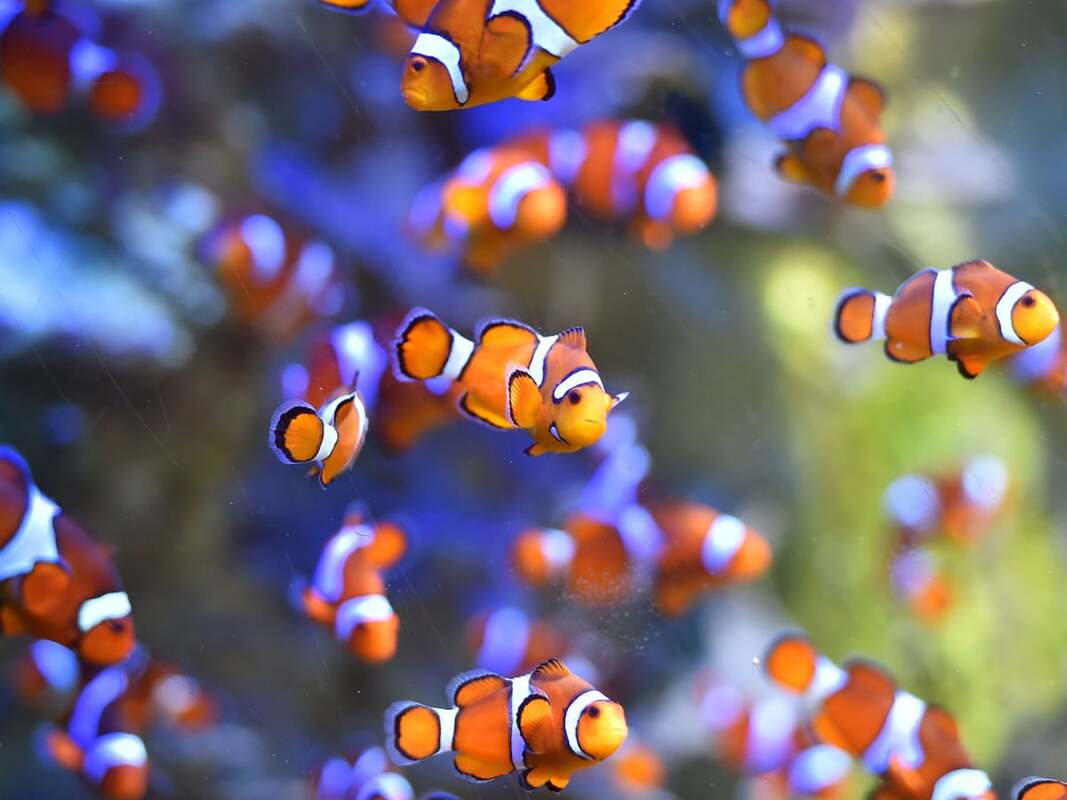"The one thing I’ve always loved about animals is that they don’t judge like people do. Many people believe that homosexual and transgender people are unnatural, but nature itself seems to have a different opinion. Despite the fact that seventy percent of our planet is covered in water, we still know so little about what goes on in the deep." - Ayo Thomas, 11th Grade
The one thing I’ve always loved about animals is that they don’t judge like people do. Many people believe that homosexual and transgender people are unnatural, but nature itself seems to have a different opinion. Despite the fact that seventy percent of our planet is covered in water, we still know so little about what goes on in the deep. One of those mysteries is the wonder that is gender changes in fish. Even though over four hundred species of fish undergo some form of sex change, very few people are aware of this and how many common species undergo this change (Wildlife Informer). Little is known about the neural transmissions that cause this phenomenon, however scientists are aware of several different reasons, and ways that this can occur.
So far the most interesting in my opinion is the mangrove rivulus. They are self fertilizing hermaphrodites meaning they can produce fry, or infant fish, without the help of another organism. They have one organ known as an ovotestis where they produce and fertilize their own eggs (Jennifer D. Gresham et al). Despite this, some members of this incredible species of fish do still develop as male, though so far there has been no research to show that any of these fish develop as fully female. These males very rarely have an opportunity to reproduce due to the fact that the hermaphrodites do not often lay unfertilized eggs. The idea that some aquatic animals might not require males is likely something many people might not want to believe but there has been extensive research done to show that this is in fact true.
Another option is the need based change that the California Sheephead undergoes. The most fascinating thing about this is that all members of this species began their lives as female and transition into male usually around two thirds of the way through their lives (Meet the California Sheephead). Unfortunately their lifespans can be cut by over half, from about twenty years to only nine, if they live in an environment with a food shortage. This species of fish is also very important to the ecosystem of a kelp forest. The main food source of the Sheephead is urchins which in turn eat kelp (LiveScience). They can destroy whole forests if the sheephead aren’t there to keep them in check. However the aquatic animal is now listed as vulnerable by the International Union for the Conservation of Nature and Natural Resources known by the abbreviation IUCN. This is due to overfishing that has been taking place on and off since the late 1800’s when Chinese fishermen caught the fish in large quantities for drying and salting. The fish were mostly left alone until the 1980’s when commercial fisheries began catching the fish in large numbers to sell to asian markets and restaurants.
Last but not least, and my personal favorite, the well known clownfish. Many people probably know of this fish from the popular kids movie, Finding Nemo. What you might not know is that the clownfish is one of the hundreds of species that experiences sex change, and once you know the movie is cast in an entirely different light. Clown Fish typically travel in “family groups” consisting of one female and one male as well as a group of juveniles who have no gender yet (Nature.com). Because the ocean is a dangerous place for such small fish, when the head female dies the male’s behavior begins to change. He becomes more aggressive and starts to court the juveniles as a female would. Within a short period of time the head male has become female and one of the juveniles has transitioned into a male. By this logic, in the movie Finding Nemo, the father would have become female after the passing of his wife to reset the balance. And throughout the whole movie Nemo is referred to as male but in clownfish juveniles don't have gender that young.
Even an incredibly common fish that we eat, salmon, can experience gender changes if the temperature of the water changes too much. If this phenomenon is so easy for the animal kingdom to accept then why can’t we. Is it perhaps because it doesn’t happen naturally or automatically? Using that logic we shouldn’t be using machines or weapons that our own bodies don’t make. If we really are as evolved as we claim to be, why can’t we accept something that a fish can.
So far the most interesting in my opinion is the mangrove rivulus. They are self fertilizing hermaphrodites meaning they can produce fry, or infant fish, without the help of another organism. They have one organ known as an ovotestis where they produce and fertilize their own eggs (Jennifer D. Gresham et al). Despite this, some members of this incredible species of fish do still develop as male, though so far there has been no research to show that any of these fish develop as fully female. These males very rarely have an opportunity to reproduce due to the fact that the hermaphrodites do not often lay unfertilized eggs. The idea that some aquatic animals might not require males is likely something many people might not want to believe but there has been extensive research done to show that this is in fact true.
Another option is the need based change that the California Sheephead undergoes. The most fascinating thing about this is that all members of this species began their lives as female and transition into male usually around two thirds of the way through their lives (Meet the California Sheephead). Unfortunately their lifespans can be cut by over half, from about twenty years to only nine, if they live in an environment with a food shortage. This species of fish is also very important to the ecosystem of a kelp forest. The main food source of the Sheephead is urchins which in turn eat kelp (LiveScience). They can destroy whole forests if the sheephead aren’t there to keep them in check. However the aquatic animal is now listed as vulnerable by the International Union for the Conservation of Nature and Natural Resources known by the abbreviation IUCN. This is due to overfishing that has been taking place on and off since the late 1800’s when Chinese fishermen caught the fish in large quantities for drying and salting. The fish were mostly left alone until the 1980’s when commercial fisheries began catching the fish in large numbers to sell to asian markets and restaurants.
Last but not least, and my personal favorite, the well known clownfish. Many people probably know of this fish from the popular kids movie, Finding Nemo. What you might not know is that the clownfish is one of the hundreds of species that experiences sex change, and once you know the movie is cast in an entirely different light. Clown Fish typically travel in “family groups” consisting of one female and one male as well as a group of juveniles who have no gender yet (Nature.com). Because the ocean is a dangerous place for such small fish, when the head female dies the male’s behavior begins to change. He becomes more aggressive and starts to court the juveniles as a female would. Within a short period of time the head male has become female and one of the juveniles has transitioned into a male. By this logic, in the movie Finding Nemo, the father would have become female after the passing of his wife to reset the balance. And throughout the whole movie Nemo is referred to as male but in clownfish juveniles don't have gender that young.
Even an incredibly common fish that we eat, salmon, can experience gender changes if the temperature of the water changes too much. If this phenomenon is so easy for the animal kingdom to accept then why can’t we. Is it perhaps because it doesn’t happen naturally or automatically? Using that logic we shouldn’t be using machines or weapons that our own bodies don’t make. If we really are as evolved as we claim to be, why can’t we accept something that a fish can.
Citations:
9 SPECIES OF FISH THAT CHANGE GENDER (WITH PICTURES)
Meet The California Sheephead
For Sex-Changing Fish, Size Matters in Urchin Battle by Becky Oskin
Sex Change in Clownfish: Molecular Insights from Transcriptome Analysis by Laura Casas, Fran Saborido-Rey, Taewoo Ryu, Craig Michell, Timothy Ravasi, and Xabier Irigoien
Sex Change as a Survival Strategy by Jennifer D. Gresham, Kristine M. Marson, Andrey Tatarenkov, and Ryan L. Earley
9 SPECIES OF FISH THAT CHANGE GENDER (WITH PICTURES)
Meet The California Sheephead
For Sex-Changing Fish, Size Matters in Urchin Battle by Becky Oskin
Sex Change in Clownfish: Molecular Insights from Transcriptome Analysis by Laura Casas, Fran Saborido-Rey, Taewoo Ryu, Craig Michell, Timothy Ravasi, and Xabier Irigoien
Sex Change as a Survival Strategy by Jennifer D. Gresham, Kristine M. Marson, Andrey Tatarenkov, and Ryan L. Earley


